The 6 Stages You Absolutely Can’t Miss at the 2024 Giro d’Italia
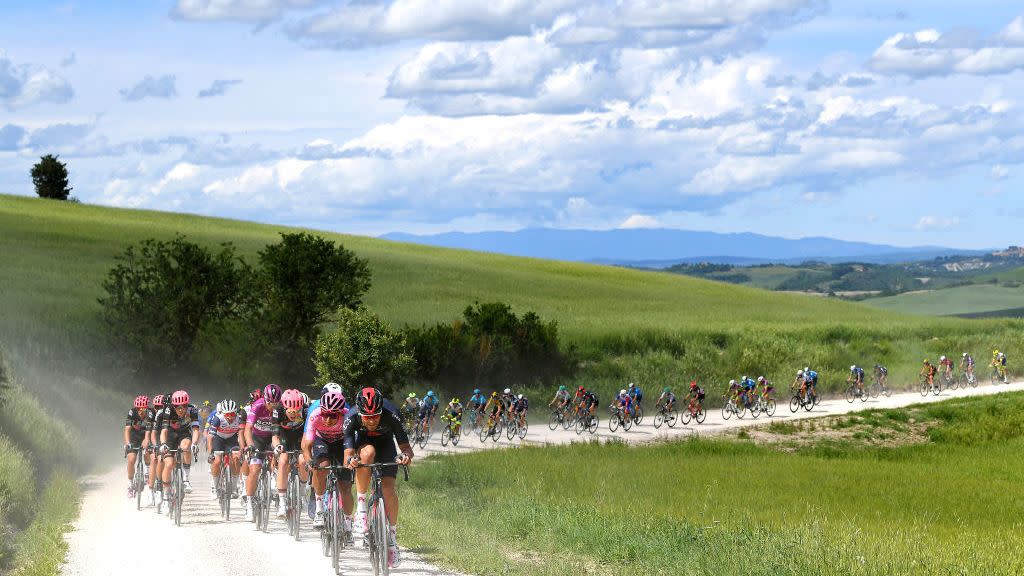
The 107th edition of the Giro d’Italia begins this Saturday in Venaria Reale, and the course–which was announced last fall–looks to be one of the more balanced in recent memory, with two individual time trials, seven stages with summit or uphill finishes, and at least six stages expected to end with field sprints. Overall, the riders will cover 3,386.7 kilometers (2,138 miles) spread over 21 stages, with about 43,000 meters of elevation gain.
Here are six stages we’re already marking in our calendars—and in case you’re a Max subscriber with the streaming platform’s B/R Sports package, we’ll tell you when to tune in to catch the action. One of the most beautiful and challenging races of the season, the Giro never disappoints.
[table-of-contents] stripped
Stage 2: San Francesco al Campo to Santuario di Oropa, 161 km
Sunday, May 5
The 2024 Giro d’Italia begins with two exciting stages in and around Torino in the foothills of the Alps. Stage 1 looks a lot like a mini-version of Il Lombardia, the season’s final one-day Monument. It’s a hilly race around Lake Como that Slovenia’s Tadej Pogačar (UAE Team Emirates)–the Giro’s overwhelming pre-race favorite–has won three years in a row.
It’s an exciting way to start the season’s first grand tour, but Stage 2 ups the ante with the Giro’s first summit finish.
The first half of the 161K stage, beginning in San Francesco al Campo, is pretty flat. But once the riders pass through the first Intermediate Sprint in Valdengo, things get much harder thanks to a series of small climbs leading up to the final summit of the day: the Category 1 ascent to the Santuario di Oropa (11.8K at 6.2%).
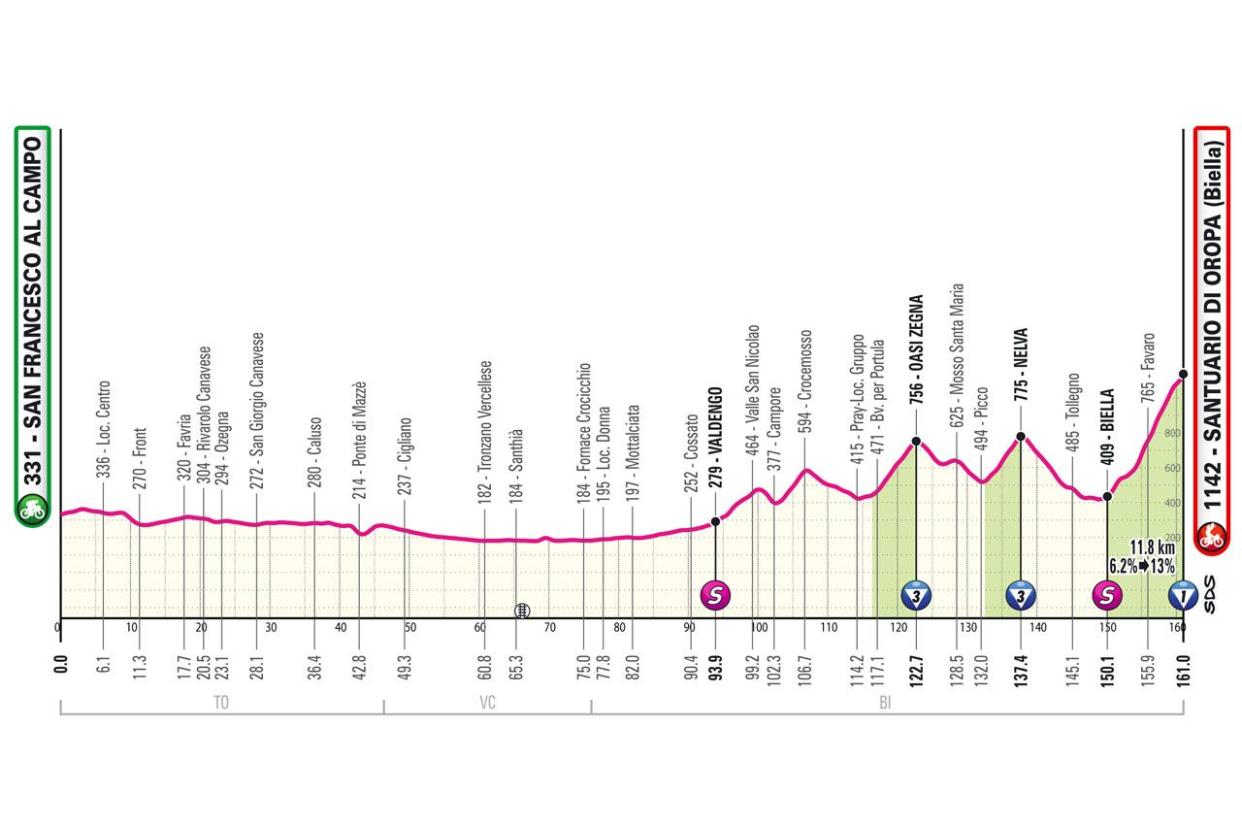
This year’s “Cima Pantani,” the Oropa, honors the memory of Marco Pantani, an Italian star of the 1990s and early 2000s who took one of his most famous wins here during the 1999 Giro. He dropped his chance about 8K from the top of the climb and then passed 49 other riders to win the stage. (To be fair, he was later forced to leave the race after failing a drug test.)
The Oropa is a tough climb, but it’s not the hardest in this year’s Giro–and it comes very early in the race, when everyone’s still fresh. But with Pog on this year’s starting line, we won’t be surprised if he uses these opening stages to take the maglia rosa (“pink jersey”) awarded to the leader of the General Classification just two days into the race.
When to Watch: The final climb begins in Biella, which the riders should pass through at about 10:30 a.m. EDT. Tune in then to watch all the excitement on the Giro’s first summit finish.
Stage 6: Torre del Lago Puccini to Rapolano Terme, 180 km
Thursday, May 9
The Giro d’Italia has always embraced gravel roads. In 2005, the organizers took the race up and over the Colle de Finistere for the first time, a climb in the Italian Alps famous for an 8K gravel section near the pass's summit.
In 2010, the Giro was the first grand tour (of the modern era, at least) to introduce gravel roads on a non-mountain stage when the organizers included several sections of Tuscany’s white gravel roads near the end of Stage 7, a 220K ride from Carrara to Montalcino.
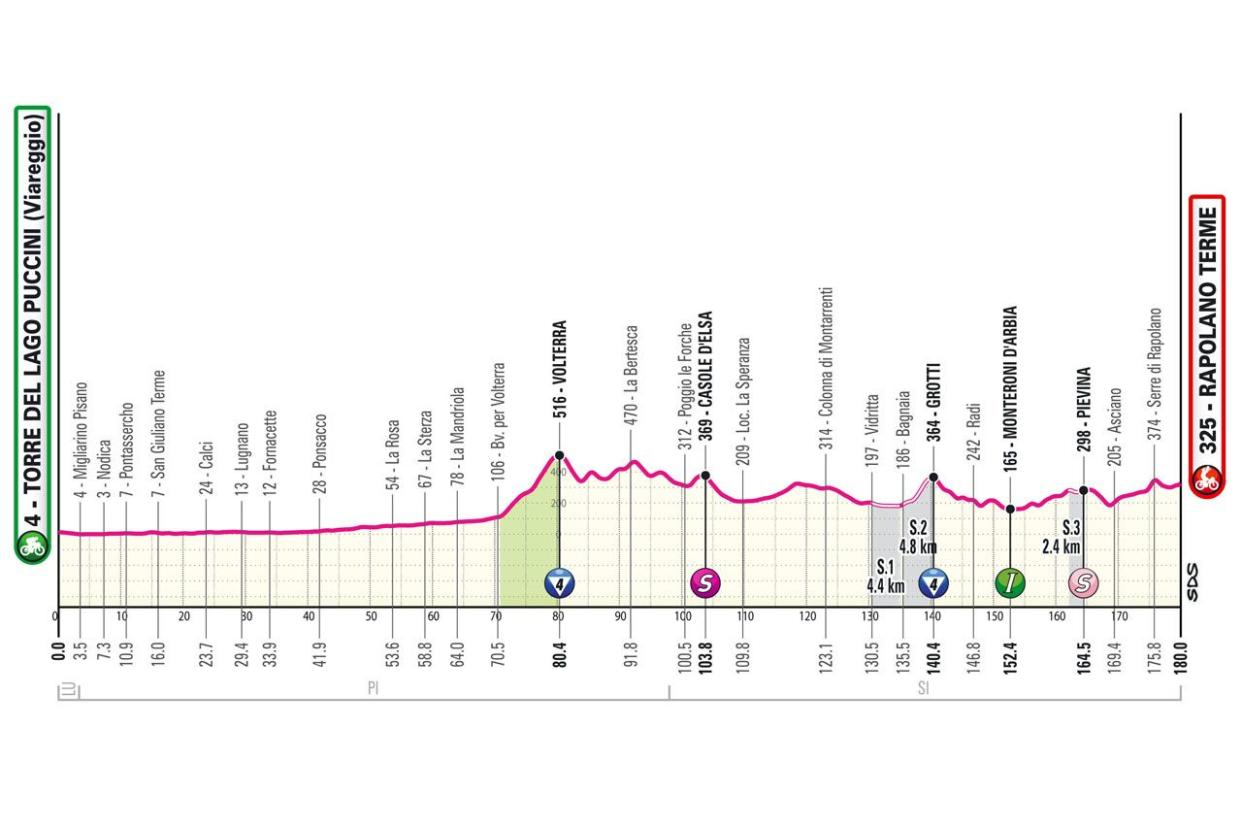
And while this year’s race doesn’t go over the Finistere, it does bring the riders over about 12K of gravel roads during the second half of Stage 6. Starting in Viareggio, the 180K stage begins gently, but things pick up once the riders hit the Category 4 climb to Volterra. From here, the stage profile gets pretty jagged with lots of short, punchy climbs and three sections of strade bianche, which could shatter the peloton.
We’re most excited about a nasty little climb about 6K from the finish line, which has been overshadowed by the gravel roads preceding it. Taking the riders up to the hilltop village of Serre di Rapolano, the 1.2K climb is not categorized–which is a bit of a head-scratcher considering it has an average gradient of 8.2% with a ramp near the top that hits 20%.
The day before the Giro’s first individual time trial, Stage 6 offers a perfect opportunity for an ambush, possibly by a rider who doesn’t like his chances in the next day’s race against the clock. It’s also another perfect day for Pog, who won the Strade Bianche road race for a second time in March after an 80K solo breakaway. If his team works as hard as it did in March to set up their captain for his well-timed, leg-breaking attack, he could do similar damage here.
When to Watch: We’ll be tuning in around 10:00 a.m. EDT, just as the riders hit the first section of sterrato (“gravel”). We know it’s a weekday, so if that’s too early, make sure you’re at least watching by about 10:35 a.m. EDT; that should leave you enough time to see the final 20K, including the last section of the gravel and the steep climb to Serre di Rapolano.
Stage 8: Spoleto to Prati di Tivo, 152 km
Saturday, May 11
Talk about a tough three days at the office. As if a tricky gravel stage (Stage 6) and an individual time trial with an uphill finish (Stage 7) weren’t enough, Stage 8 brings the Giro’s second summit finish–at Prati di Tivo, a mountain resort on the massif of the Gran Sasso d’Italia, the highest summit in the Apennines.
The day begins in Spoleto–a town nestled in the hills of southern Umbria–and quickly begins climbing an uncategorized ascent to Forca di Cerro and then the Category 2 Forca Capistrello (16.3K at 5.6%).
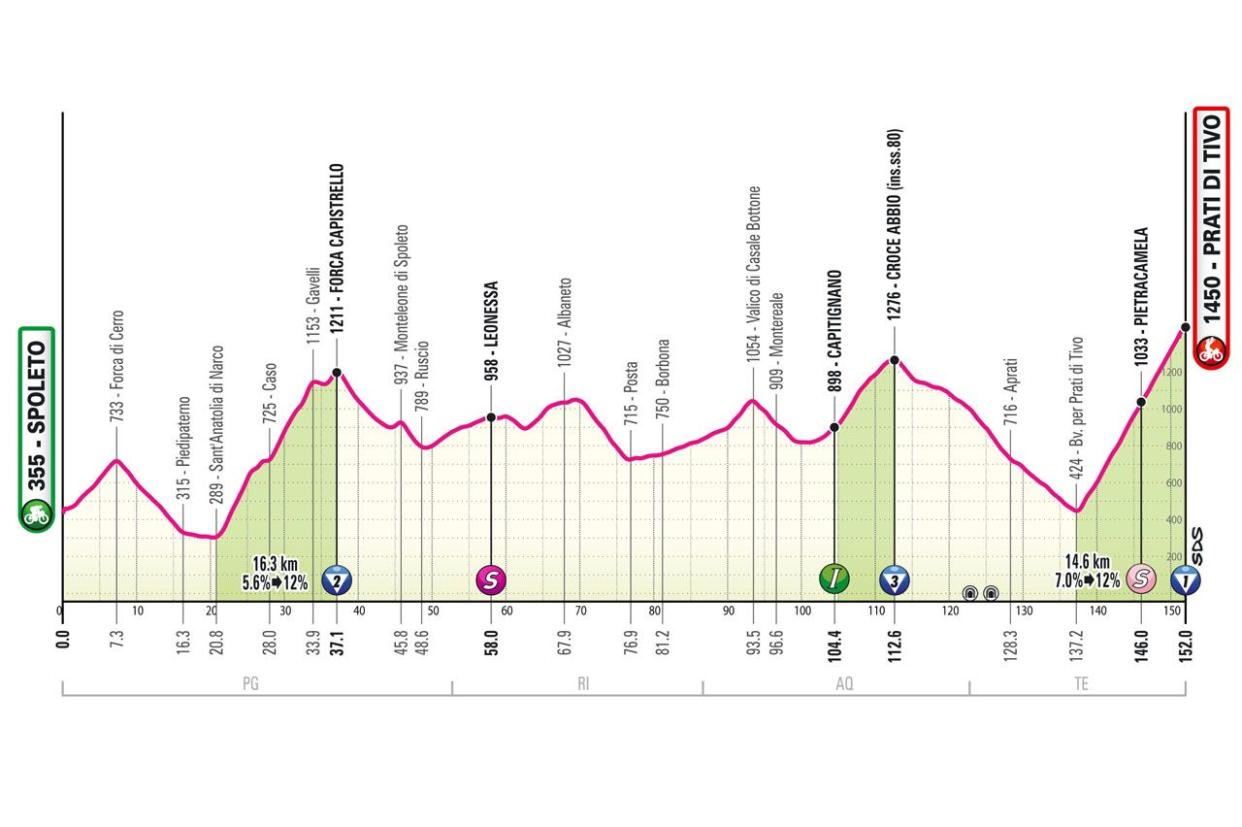
From here, the race bounces for about 70K before the second categorized climb, the Category 3 Croce Abbio. But this is all just a warm-up, because after cresting the Croce Abbio, a long descent takes the race down to the foot of the day’s final and most difficult challenge: the ascent to Prati di Tivo, a 14.6K climb with a 7% average gradient that–aside from one 12% pitch a little more than halfway up the climb–stays pretty steady.
One of the most challenging climbs in the Abruzzo region, the Prati di Tivo will force a significant selection, and anyone hoping to go into the second week within sight of the Maglia Rosa will need to be at their best.
When to Watch: The riders should hit the foot of the Prati di Tivo at around 10:25 a.m. EDT–depending on the average speed of the stage–which is when we’ll be tuning in. That said, Umbria is one of Italy’s most beautiful regions, so we won’t blame you for tuning in earlier.
Stage 15: Manerba del Garda to Livigno/Mottolino, 222 km
Sunday, May 19
The Giro’s second week is largely transitional, with a new summit finish in Cusano Mutri to start the week (Stage 10), several stages for sprinters and opportunists, and a flat time trial (Stage 14) for ITT specialists like Italy’s Filippo Ganna (INEOS Grenadiers). But it ends with what might be the hardest mountain stage of the entire race: a 222K stage from Manerba del Garda to Livigno, with a summit finish at the Mottolino ski resort.
The longest stage of the Giro begins on the shores of Lake Garda and then heads north into the heart of the Italian Alps. The first two of the day’s five categorized climbs come within the first 65K of the stage: the Category 3 ascent to Lodrino and the Category 2 Colle San Zeno (13.9K at 6.6%). By the summit of the San Zeno, a breakaway of stage hunters and riders hoping to win the Giro’s King of the Mountains competition should be well up the road–especially if Pogačar has a significant lead on the General Classification.
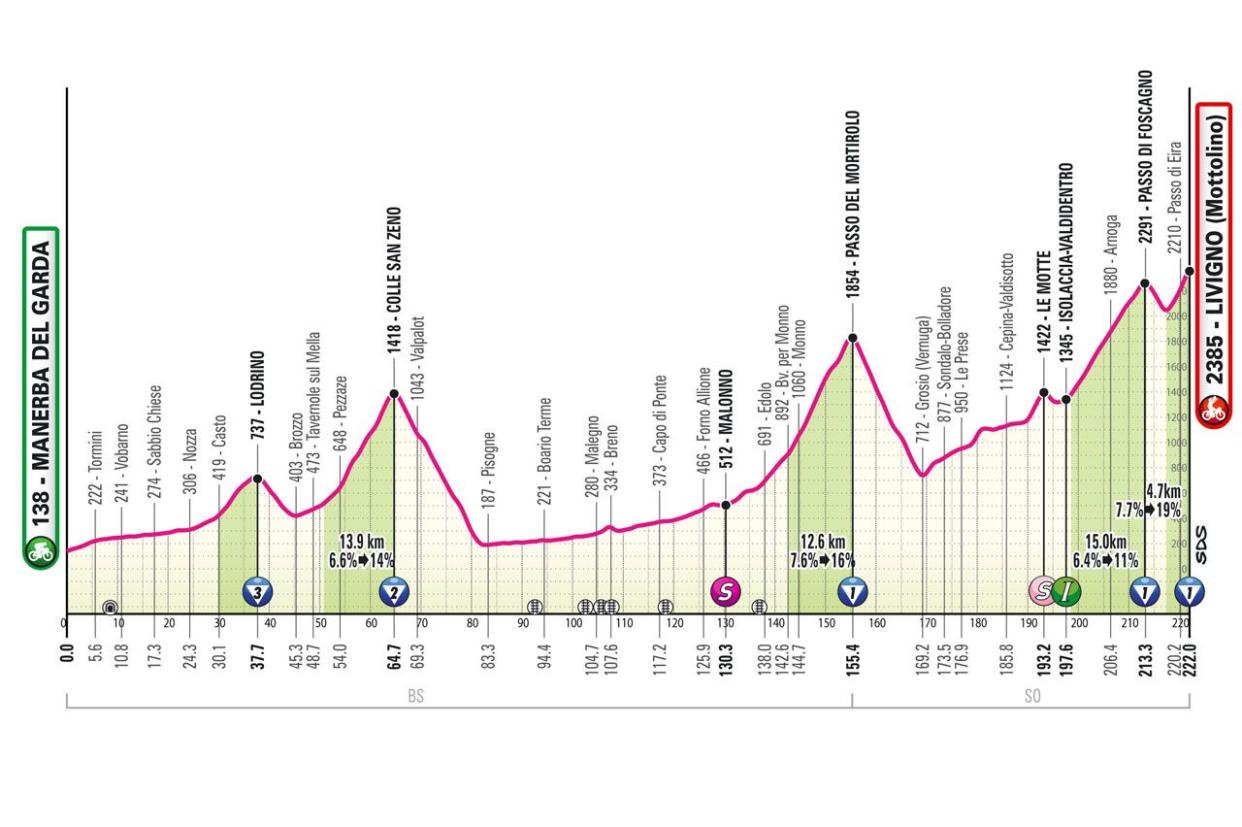
The riders will then descend the San Zeno and begin a long, slow uphill grind through the valley to Malonno–the site of the day’s Intermediate Sprint–and then on to the base of the day’s most fearsome ascent: the Category 1 Passo del Mortirolo.
One of the Giro’s most famous climbs, the Mortirolo, was added after the route was announced last fall. The stage was initially supposed to temporarily take the race into Switzerland. Still, issues between the Giro’s organizers and Swiss authorities caused the race to be rerouted, which put the Mortirolo on the menu.
There are three ways to the top of the Mortirolo, and while this year’s Giro isn’t taking the hardest, that won’t matter much: after two weeks of racing and with an average gradient of 7.6%, the 12.6K climb will do some damage on an already-tired peloton.
A 14K descent takes the riders from the top of the Mortirolo down to Grosio, and they’ll need to do whatever they can to recover. The rest of the stage is almost entirely uphill–just about all 53K of it.
The first climbing section brings the race from Grosio up to Le Motte. This elevation gain is not categorized, but the stage profile is clear: the riders are climbing here. A brief downhill takes them through Isolaccia-Valdidentro, but then they’re climbing again, this time on the lower slopes of the first of the two back-to-back 2,000-meter summits that close the stage: the Category 1 Passo di Foscagno (15K at 6.4%).
By this point, the riders have been racing for well over 200K, and the Foscagno tops out at 2,291 meters above sea level so that the air will be thin. It’s a steady climb, though, and aside from one steep pitch near the base, the riders should be able to establish a good rhythm. If there are attacks, they’ll likely come closer to the summit, as there’s one more ascent still to come: the Category 1 climb to the finish at the Mottolino ski resort.
There won’t be much time for anyone to recover between the Foscagno and the climb to Mottolino, as there are just 5K of downhill roads from the summit of the former to the base of the latter. That’s just enough time for the riders to grab a bottle, shake out their legs, and prepare themselves for the 4.7K climb to the finish, with a steep average gradient of 7.7% and two 19% ramps inside the final 1,500 meters. Ouch!
Depending on the General Classification heading into the stage, a breakaway could stay away to fight for the win in Mottolino. But even if one does, the GC group will explode behind them, with Pogačar probably using this stage to consolidate his lead–perhaps putting the maglia rosa out of reach once and for all.
When to Watch: Lance Armstrong called the Mortirolo the hardest climb he’s ever ridden. If you want to see what it’s all about, you’ll need to tune in around 8:30 a.m. EDT, more than two hours before the end of the stage. If that’s too much for your Sunday morning, a safer bet might be to tune in around 10:00 a.m. EDT as the riders hit the base of the Passo di Foscagno. The stage is expected to end about 50 minutes later.
Stage 17: Selva di Val Gardena to Passo del Brocon, 159 km
Wednesday, May 22
After the second Rest Day, Stage 16 opens the Giro’s third week with a trip over the Stelvio, a 2,758m pass that’s by far the highest in this year’s race–and earns a cash prize for the first rider to the summit. But as much as we love the Stelvio, the climb comes too early in the 202K stage to decide the outcome.
But Stage 17 is shorter–just 159K–and has two more categorized climbs–five–than Stage 16, so we expect it to be more explosive and more impactful.
The day begins in Selva di Val Gardena, a village high in the Dolomites, a small range of mountains in northeastern Italy that, while technically part of the Alps, is known for its distinct aesthetic and geologic flavor.
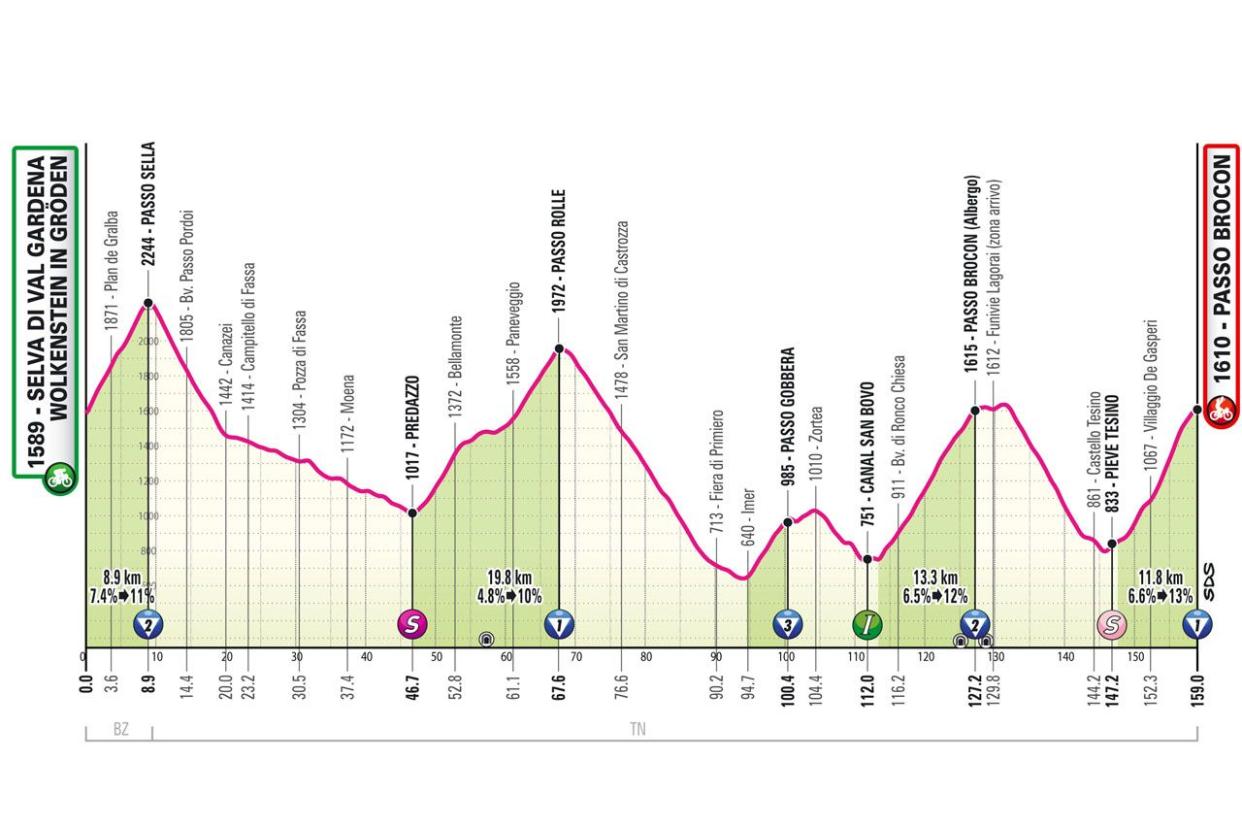
After rolling out of Selva di Val Gardena, the riders immediately head up and over the day’s first climb: the Category 2 Passo Sella (8.9K at 7.4%). While “just” a Category 2 ascent, this is one of the tougher Category 2 climbs in this year’s race, so riders will likely be warming up on trainers at the start so as not to get dropped too early in the stage.
From the summit of the Sella, the race descends for about 35K to Predazzo, which hosts the day’s Intermediate Sprint. But they won’t be sprinting for long as Predazzo also sits at the foot of the day’s next climb: the Category 1 Passo Rolle, a long climb with a deceptively low average gradient (4.8%) thanks to about 6K of flat-ish roads in the middle of the 19.8K ascent. But the road kicks up again with about 6K to go, and from there, it’s a harder, steadier grind to the summit.
Another long descent comes next, followed by a Category 3 “bump” in the valley–the Passo Gobbera. A tiny climb compared to the others on Stage 17, the Gobbera will serve as a nice aperitivo for the day’s final two climbs: back-to-back ascents of the Passo Brocon, which the riders will climb from two sides.
First, they’ll climb it from the north via Canal San Bovo (13.3K at 6.5%). This is the “easier” route to the summit, and as such, it’s been given a Category 2 rating. From the summit, the riders will descend to Pieve Tesino and then head right back up–this time via the steeper side.
When climbed from Pieve Tesino, the Brocon gets a Category 1 rating (11.8K at 6.6%). There are two places to attack in the finale: first on a 13% ramp at about 3K to go and then again with about 1.5K to go, as the road steepens following a 500m section of flat road. Whether it’s to win the stage or to try and gain time on the General Classification, these are the best spots for a rider to try and drop his competitors. Expect an exciting finish.
When to Watch: It’s a shame this stage falls on a Wednesday because watching it from the base of the first climb up the Passo Brocon (around 9:30 a.m. EST) would be fun. If that’s a bigger commitment than your workday can handle, then wait until about 10:25 a.m. EDT, when the riders pass through Pieve Tesino at the foot of their second and final ascent of the Brocon.
Stage 20: Alpago to Bassano del Grappa, 184 km
Saturday, May 25
The organizers usually leave one of the race’s hardest stages for the Giro’s second-to-last day, and this year’s Stage 20 is no different. The 184K stage begins in Alpago, a town often called the “Gateway to the Dolomites,” and then takes the riders southeast along the northern edge of the Venetian plain. To the right, the riders will see the Alps; to their left, they’ll see the plain.
Once through the Intermediate Sprint in Possagno, the day’s main course begins–a double-shot of the Category 1 Monte Grappa (18.1K at 8.1%). No, that’s not a typo: the riders will be climbing the Monte Grappa twice–and not from different approaches: they’re taking the same route to the summit each time.
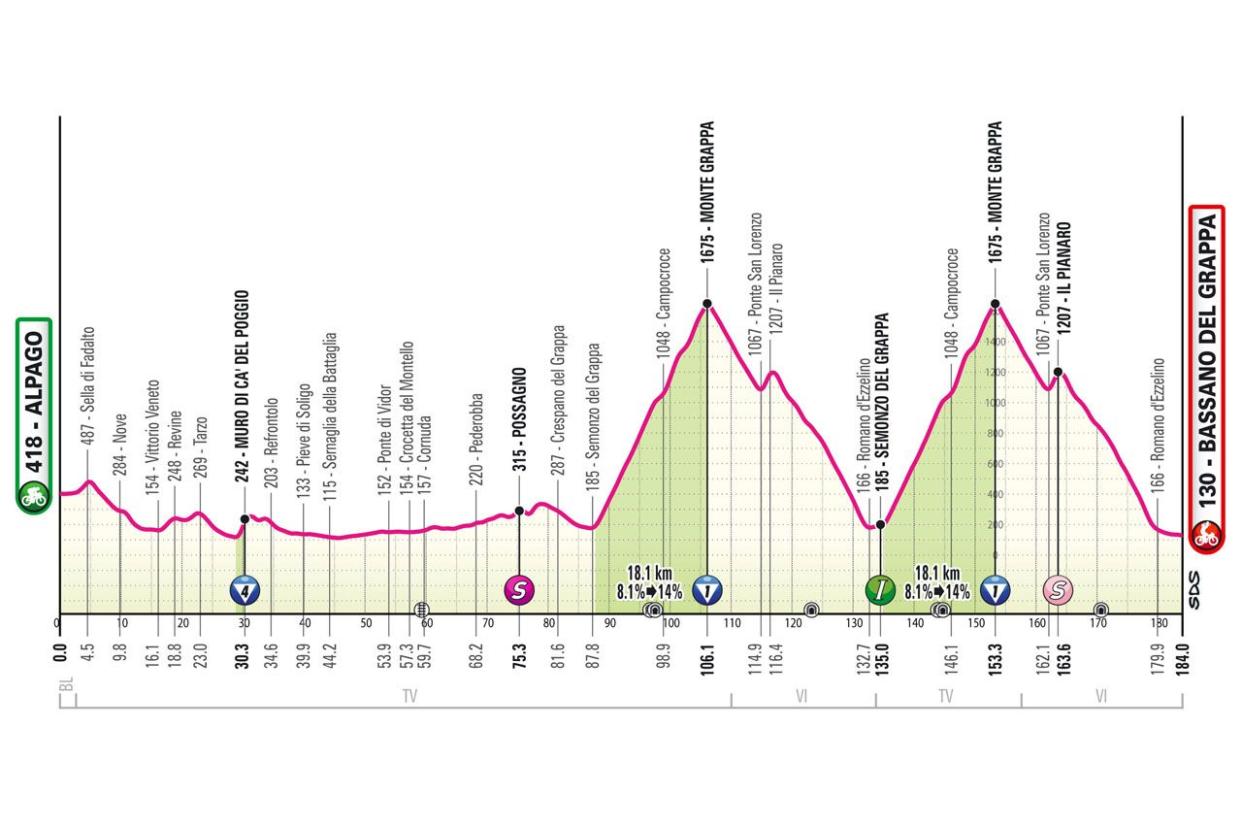
The Monte Grappa was the setting of a series of battles between Austro-Hungarian and Italian forces during World War I. Ernest Hemingway witnessed much of the fighting while volunteering with the American Red Cross and was even wounded by mortar fire while transporting supplies to the Italian troops. His novel, A Farewell to Arms, later depicted much of what he experienced.
The climb is a beast, with a steep average gradient that never lets up. One ramp hits 17%–about 2K from the summit–which could be a good spot for an attack from anyone hoping to get a gap before crossing the summit and beginning the 29K descent down to the finish in Bassano del Grappa.
Even though the stage finishes in the valley, there should still be plenty of excitement. First, there’s the battle for the stage victory, which could go to a rider from the early breakaway. Assuming the race plays out as we expect it to, Stage 20 could also determine the two riders standing beside Pogačar on the final podium in Rome 24 hours later.
When to Watch: We’re eager to see if anyone will “go long” in a bid to win the stage (or the Giro?) by attacking near the top of the first ascent of the Monte Grappa. But as much as we’d like to see it, we just don’t see it happening. That’s why we’ll be tuning in around 9:30 a.m. EDT–as the riders begin their second trip up the Monte Grappa–and staying in front of our screens all the way through what could be a pretty exciting descent from the top of the climb all the way down to the finish in Bassano del Grappa.
You Might Also Like
